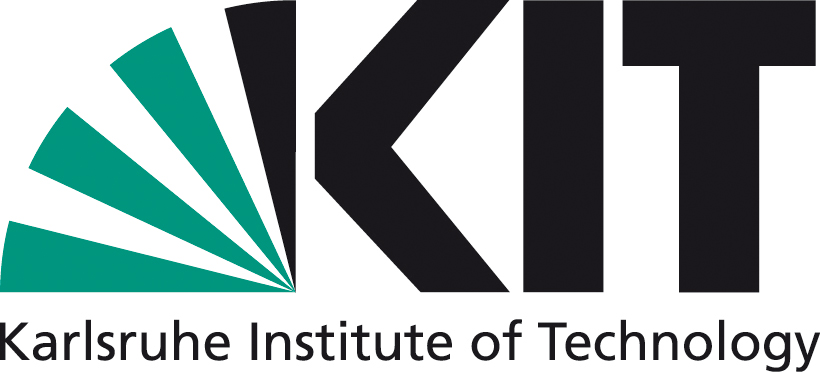Artificial intelligence in melanoma diagnosis: Three scenarios, shifts in competencies, need for regulation, and reconciling dissent between humans and AI
DOI:
https://doi.org/10.14512/tatup.33.1.48Keywords:
melanoma, diagnosis, artificial intelligence, patient-doctor relationship, diagnostic accuracyAbstract
Tools based on machine learning (so-called artificial intelligence, AI) are increasingly being developed to diagnose malignant melanoma in dermatology. This contribution discusses (1) three scenarios for the use of AI in different medical settings, (2) shifts in competencies from dermatologists to non-specialists and empowered patients, (3) regulatory frameworks to ensure safety and effectiveness and their consequences for AI tools, and (4) cognitive dissonance and potential delegation of human decision-making to AI. We conclude that AI systems should not replace human medical expertise but play a supporting role. We identify needs for regulation and provide recommendations for action to help all (human) actors navigate safely through the choppy waters of this emerging market. Potential dilemmas arise when AI tools provide diagnoses that conflict with human medical expertise. Reconciling these conflicts will be a major challenge.
References
AI Dermatologist (2023): AI Dermatologist Skin Scanner. Available online at https://ai-derm.com/, last accessed on 03. 01. 2024.
Au, Jessica; Falloon, Caitlin; Ravi, Ayngaran; Ha, Phil; Le, Suong (2023): A beta-prototype chatbot for increasing health literacy of patients with decompensated cirrhosis. Usability study. In: JMIR Human Factors 10 (1), p. e42506. https://doi.org/10.2196/42506 DOI: https://doi.org/10.2196/42506
Ayers, John et al. (2023): Comparing physician and artificial intelligence chatbot responses to patient questions posted to a public social media forum. In: JAMA internal medicine 183 (6), pp. 589–596. https://doi.org/10.1001/jamainternmed.2023.1838 DOI: https://doi.org/10.1001/jamainternmed.2023.1838
Beauchamp, Tom; Childress, James (2001): Principles of biomedical ethics. Oxford: Oxford University Press.
Bjerring, Jens; Busch, Jacob (2021): Artificial intelligence and patient-centered decision-making. In: Philosophy & Technology 34, pp. 349–371. https://doi.org/10.1007/s13347-019-00391-6 DOI: https://doi.org/10.1007/s13347-019-00391-6
Böning, Sarah-Lena; Maier-Rigaud, Remi; Micken, Simon (2019): Gefährdet die Nutzung von Gesundheits-Apps und Wearables die solidarische Krankenversicherung? Bonn: Friedrich Ebert Stiftung. Available online at https://library.fes.de/pdf-files/wiso/15883.pdf, last accessed on 03. 01. 2024.
Braun, Matthias; Hummel, Patrik; Beck, Susanne; Dabrock, Peter (2021): Primer on an ethics of AI‑based decision support systems in the clinic. In: Journal of Medical Ethics 47 (12), p. e3 https://doi.org/10.1136/medethics-2019-105860 DOI: https://doi.org/10.1136/medethics-2019-105860
Chandra, Swastika; Mohammadnezhad, Masoud; Ward, Paul (2018): Trust and communication in a doctor-patient relationship. A literature review. In: Journal of Healthcare Communications 3 (3), pp. 1–6. https://doi.org/10.4172/2472-1654.100146 DOI: https://doi.org/10.4172/2472-1654.100146
Ellul, Jacques (1964): The technological society. New York, NY: Knopf.
Esteva, Andre et al. (2017): Dermatologist-level classification of skin cancer with deep neural networks. In: Nature 542 (7639), pp. 115–118. https://doi.org/10.1038/nature21056 DOI: https://doi.org/10.1038/nature21056
Farah, Line; Davaze-Schneider, Julie; Martin, Tess; Nguyen, Pierre; Borget, Isabelle; Martelli, Nicolas (2023): Are current clinical studies on artificial intelligence-based medical devices comprehensive enough to support a full health technology assessment? A systematic review. In: Artificial Intelligence in Medicine 140, p. 102547. https://doi.org/10.1016/j.artmed.2023.102547 DOI: https://doi.org/10.1016/j.artmed.2023.102547
Jones, Owain et al. (2022): Artificial intelligence and machine learning algorithms for early detection of skin cancer in community and primary care settings. A systematic review. In: The Lancet Digital Health 4 (6), pp. e466–e476. https://doi.org/10.1016/S2589-7500(22)00023-1 DOI: https://doi.org/10.1016/S2589-7500(22)00023-1
Kis, Anne; Augustin, Matthias; Augustin, Jobst (2017): Regionale fachärztliche Versorgung und demographischer Wandel in Deutschland – Szenarien zur dermatologischen Versorgung im Jahr 2035. In: Journal der Deutschen Dermatologischen Gesellschaft 15 (12), pp. 1199–1210. https://doi.org/10.1111/ddg.13379_g DOI: https://doi.org/10.1111/ddg.13379_g
Krensel, Magdalene; Augustin, Matthias; Rosenbach, Thomas; Reusch, Michael (2015): Wartezeiten und Behandlungsorganisation in der Hautarztpraxis. In: Journal der Deutschen Dermatologischen Gesellschaft 13 (8), pp. 812–814. https://doi.org/10.1111/ddg.80_12625 DOI: https://doi.org/10.1111/ddg.80_12625
Müllner, Marcus (2005): Die Zulassung von Medikamenten (und anderen Medizinprodukten). Good Clinical Practice. In: Marcus Müllner: Erfolgreich wissenschaftlich arbeiten in der Klinik. Evidence Based Medicine. Wien: Springer, pp. 243–249. https://doi.org/10.1007/3-211-27476-6_33 DOI: https://doi.org/10.1007/3-211-27476-6_33
OECD – Organization for Economic Co-operation and Development (2023): Doctors’ consultations (indicator). https://doi.org/10.1787/173dcf26-en DOI: https://doi.org/10.1787/173dcf26-en
OnlineDoctor (2022): OnlineDoctor übernimmt KI‑Startup A.S.S.I.S.T. Available online at https://www.onlinedoctor.de/pressemitteilung/onlinedoctor-uebernahme-ki-startup/, last accessed on 03. 01. 2024.
Petty, Amy et al. (2020): Meta-analysis of number needed to treat for diagnosis of melanoma by clinical setting. In: Journal of the American Academy of Dermatology 82 (5), pp. 1158–1165. https://doi.org/10.1016/j.jaad.2019.12.063 DOI: https://doi.org/10.1016/j.jaad.2019.12.063
Pham, Tri-Cong; Luong, Chi-Mai; Hoang, Van-Dung; Doucet, Antoine (2021): AI outperformed every dermatologist in dermoscopic melanoma diagnosis, using an optimized deep-CNN architecture with custom mini-batch logic and loss function. In: Scientific Reports 11 (1), p. 17485. https://doi.org/10.1038/s41598-021-96707-8 DOI: https://doi.org/10.1038/s41598-021-96707-8
Ridd, Matthew; Shaw, Alison; Lewis, Glyn; Salisbury, Chris (2009): The patient–doctor relationship. A synthesis of the qualitative literature on patients’ perspectives. In: British Journal of General Practice 59 (561), pp. e116–e133. https://doi.org/10.3399/bjgp09X420248 DOI: https://doi.org/10.3399/bjgp09X420248
Saginala, Kalyan; Barsouk, Adam; Aluru, John; Rawla, Prashanth; Barsouk, Alexander (2021): Epidemiology of melanoma. In: Medical Sciences 9 (4), p. 63. https://doi.org/10.3390/medsci9040063 DOI: https://doi.org/10.3390/medsci9040063
Schreier, Jan; Genghi, Angelo; Laaksonen, Hannu; Morgas, Tomasz; Haas, Benjamin (2020): Clinical evaluation of a full-image deep segmentation algorithm for the male pelvis on cone-beam CT and CT. In: Radiotherapy and Oncology 145, pp. 1–6. https://doi.org/10.1016/j.radonc.2019.11.021 DOI: https://doi.org/10.1016/j.radonc.2019.11.021
Schwendicke, Falk et al. (2021): Cost-effectiveness of artificial intelligence for proximal caries detection. In: Journal of Dental Research 100 (4), pp. 369–376. https://doi.org/10.1177/0022034520972335 DOI: https://doi.org/10.1177/0022034520972335
Thissen, Christina (2021): KI auf dem Weg zum Facharztstandard – nicht ohne Haftungsprophylaxe. In: Radiologen WirtschaftsForum 12, pp. 7–8. Available online at https://www.rwf-online.de/system/files/RWF_12_2021.pdf, last accessed on 03. 01. 2024.
Tupasela, Aaro; Di Nucci, Ezio (2020): Concordance as evidence in the Watson for Oncology decision-support system. In: Ai & Society 35, pp. 811–818. https://doi.org/10.1007/s00146-020-00945-9 DOI: https://doi.org/10.1007/s00146-020-00945-9
Venkatesh, Viswanath (2022): Adoption and use of AI tools. A research agenda grounded in UTAUT. In: Annals of Operations Research 308 (1), pp. 641–652. https://doi.org/10.1007/s10479-020-03918-9 DOI: https://doi.org/10.1007/s10479-020-03918-9
Wehkamp, Kai; Krawczak, Michael; Schreiber, Stefan (2023): The quality and utility of artificial intelligence in patient care. In: Deutsches Ärzteblatt International 120, pp. 463–469. https://doi.org/10.3238/arztebl.m2023.0124 DOI: https://doi.org/10.3238/arztebl.m2023.0124
WHO – World Health Organization (2021): Ethics and governance of artificial intelligence for health. WHO guidance. Geneva: World Health Organization. Available online at https://iris.who.int/bitstream/handle/10665/341996/9789240029200-eng.pdf, last accessed on 03. 01. 2024.
Published
How to Cite
Issue
Section
License
Copyright (c) 2024 Jan C. Zoellick, Hans Drexler, Konstantin Drexler

This work is licensed under a Creative Commons Attribution 4.0 International License.








